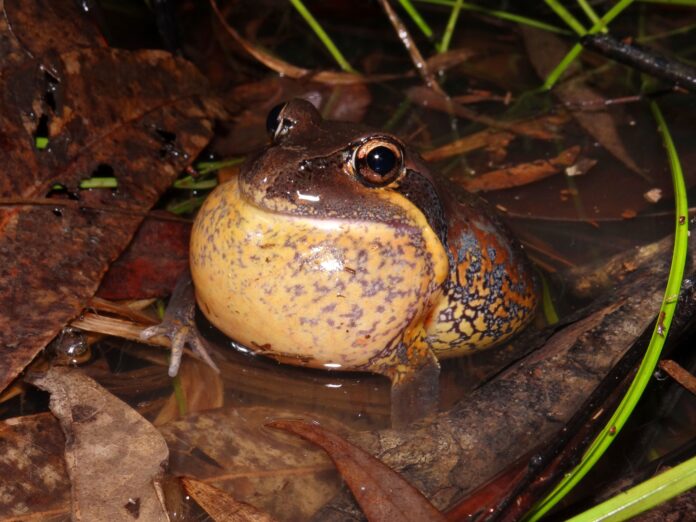A terrible case of mistaken identity often sees some of our much-desired amphibian friends ‘croak’ during the dogged toad-busting efforts in our neighbourhoods.
While many residents would be familiar with the beautiful plump outline of the Sunshine Coast green tree frog, not everyone knows their striped marshfrog from their striped rocket variety.
Some of us have the idea that cane toads are brown and all frogs are green. Or that all frogs have smooth skin and only toads are warty.
Fran Wilson turned to Facebook’s Noosa Community Notice Board on January 5 for confirmation that the striped princely creature she found in her backyard pool recently was indeed a handsome frog.
Many of the 124 responders correctly identified the amphibian as a striped swamp frog.
Stephen Thomas Kidd commented that “we live in Noosa Parklands and they are everywhere – having fun in the recent rain”, while Lala Mac warned that “too many mistake them for toads and kill them”.
The Wildlife Preservation Society of Queensland website says that within the state, 11 frog species are listed as critically endangered, seven species are endangered and 16 species are vulnerable, as of November 2021.
So, clearly, we need all the frogs we can get.
A new choir has certainly been in fine voice across the Coast, singing the praises of recent rains throughout the region.
The froggie chorus has been heard loud and clear around ponds and swimming pools, downpipes and drains, wetlands and creeks, with their songs building to a crescendo at night – much to the delight of residents and nature lovers (and even if the wild ‘aria’ does disrupt our sleep).
Want more free local news? Follow Sunshine Coast News on Facebook, LinkedIn and Instagram.
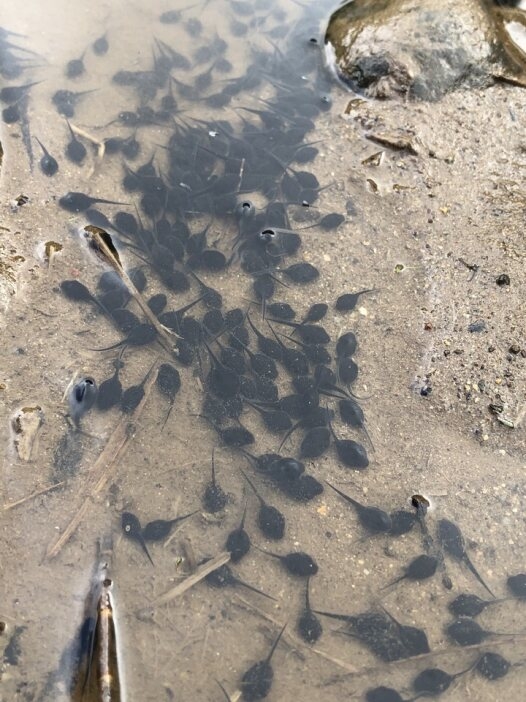
But with the visible numbers and varieties comes the mistaken identity threat.
Ecologist and Queensland Frog Society events and initiatives coordinator Jono Hooper agreed that, occasionally, people unwittingly killed frogs, thinking they were toads.
“We’ve heard of cases of mistaken identity where scarlet-sided pobblebonk or some of the other species are killed,” he said.
“With the scarlet-sided pobblebonk, people might say it looks like a cane toad. It’s a larger, ground-dwelling frog and it’s often a grey or brown colour.
“It will sit up on the ground, which many frogs do anyway, but so do cane toads. And I guess the colour of it. If someone had a quick glance, they may mistake it for a cane toad.
“They are found in a few different areas on the Coast – the more coastal, sandier landscapes – and you also get them up on the Blackall Range. They’re fairly widespread and a fairly common species.
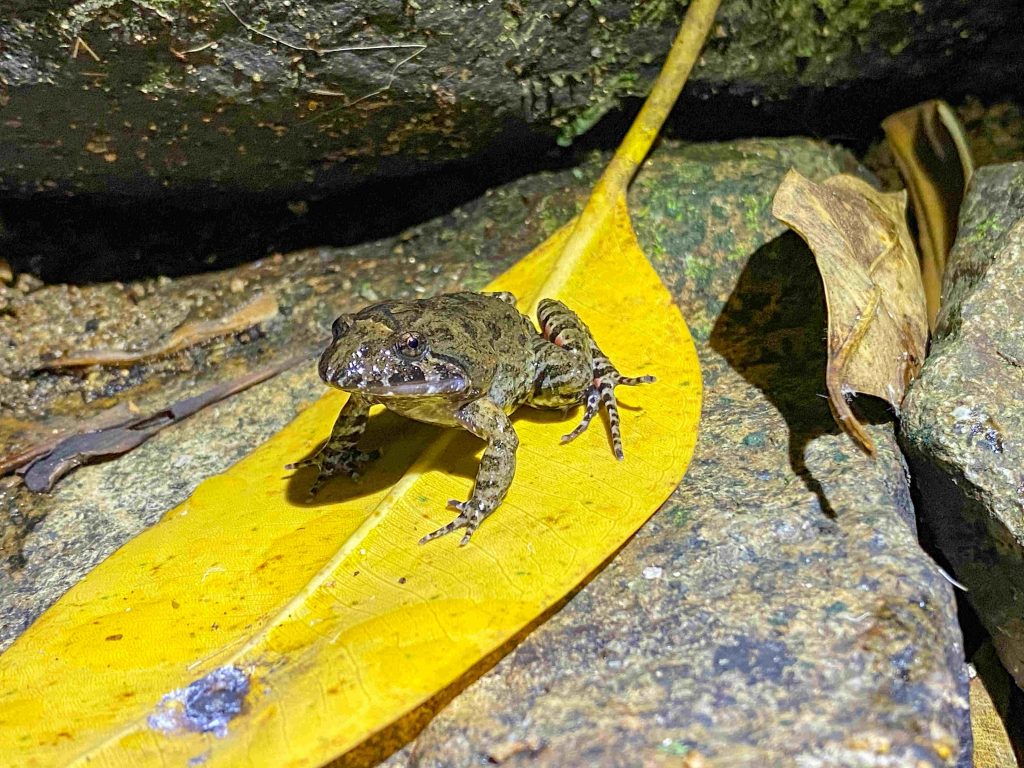
“The tusked frog – that’s a small, ground-dwelling frog, a little bit warty and the colours are dark greys and browns. That’s another case of mistaken identity.
“Then there’s the ornate burrowing frog, which we don’t get a whole lot of on the Sunshine Coast, but as soon as you head further west or north, they’re a lot more abundant.”
The froggingaround.com website creator does on-ground monitoring and surveys, frog identification and frog/tadpole capture and relocation as part of his specialist work, and also played a lead role in the development and implementation of the acid frog offset pond project at Sunshine Coast Airport, where 1.7 hectares of breeding ponds were created.
Recent rains had made frogs more active in our gardens and yards as they sought to breed, he said.
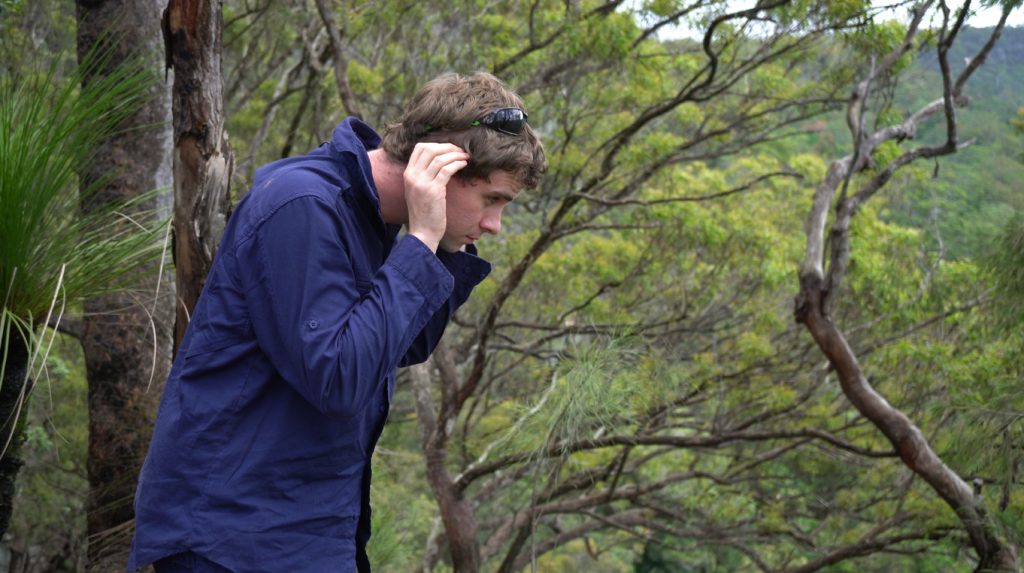
“After the prolonged dry period that we have had, the recent rains have replenished the creeks and streams and dams and ponds and roadside ditches and all those sort of places that the frogs will congregate around to breed, and so you do get that explosion in frog numbers because they are all making the most of the opportunity,” he said.
Mr Hooper said the Queensland Frog Society had created a poster (free to members, but able to be purchased from the website) that illustrated frogs found in the Greater Brisbane area, which includes the Sunshine Coast. He counted about 19 species of frogs that are brown and found in our region, including the striped marsh, eastern sedge and striped rocket varieties.
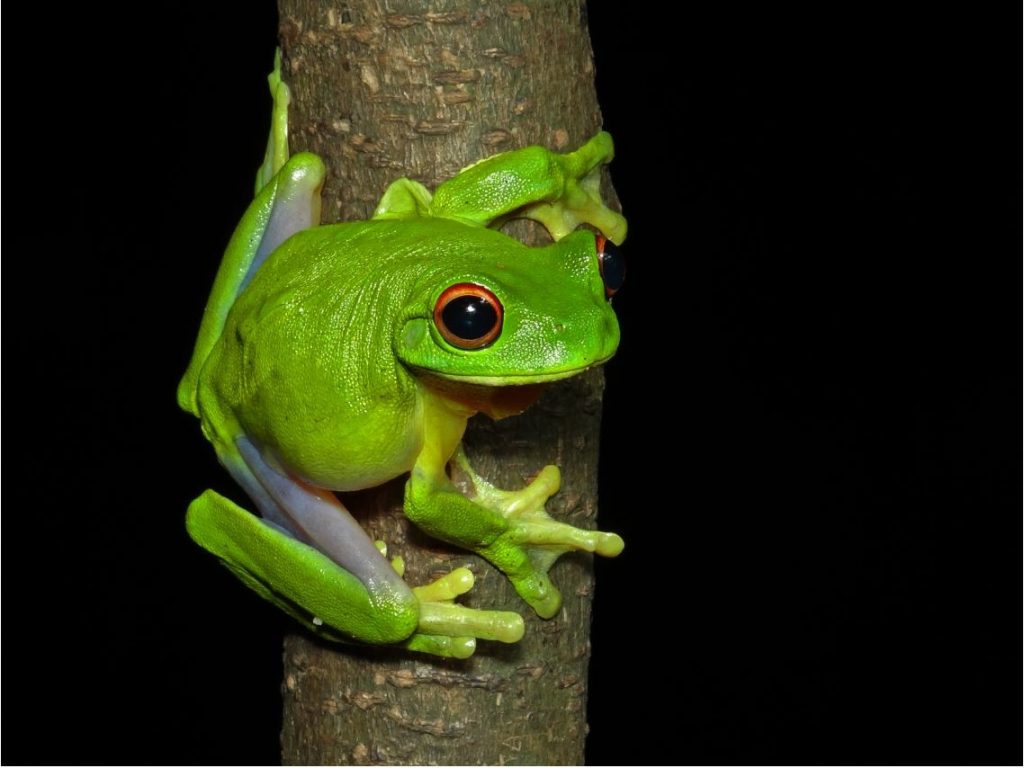
The former local resident, who works for Coast firm Future-Plus Environmental team, said his new home at Kilcoy had “plenty of green tree frogs” and some pockets of the Coast were a “stronghold” for certain species.
He said that generalisations made about declining frog populations were not always accurate.
“There’s frogs that are doing fine and certainly others that are not,” he said.
“Many would probably still be okay, these being the generalist frog species. And then you’ve got your specialist species which will only occur in certain contexts – certain water quality and environments – and there’s always pressure and probably mounting pressure on those species, with urban development as a primary threat.
“A message I would like to get across is, cane toads aren’t a huge threat to our frogs.
“They’re a fair way down the list of threats. It just doesn’t help that (toads) are in our faces and they look ugly. People might often think, ‘Oh, the first thing I need to do is get rid of cane toads’.”
While most smartphones now have a variety of apps available, such as iNaturalist and Google Lens, that allow you to take a photo of an animal, insect or plant and identify it, Mr Hooper said the Be Toadally Sure brochure also was a handy resource on the Queensland Frog Society website.
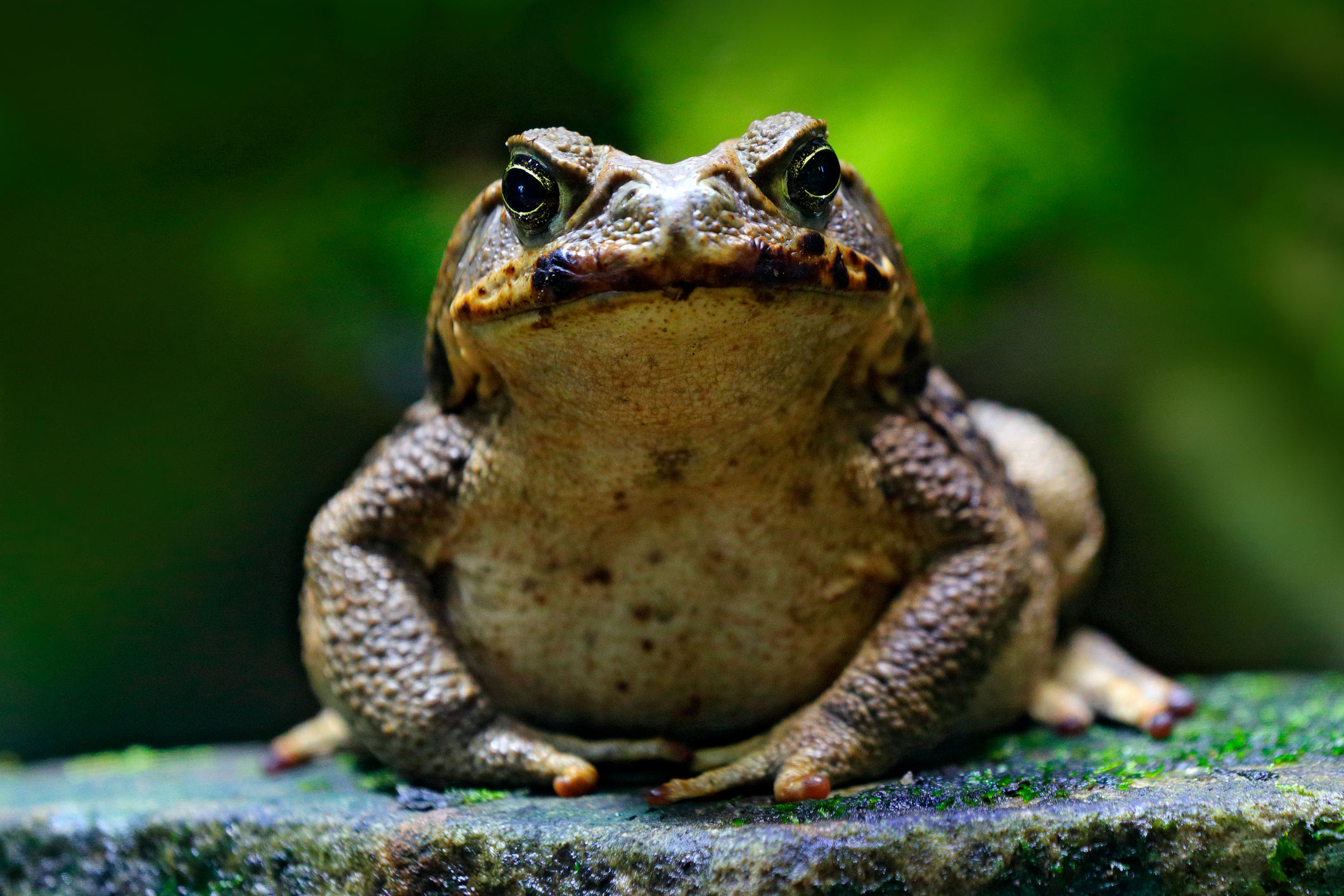
“There’s seven characteristics of a cane toad and if you can tick off each one of those against the amphibian you’re looking at, there’s probably a high chance it’s going to be a cane toad,” he said.
“We’ve just got the one species of cane toad in Australia, thankfully.
“People have found the Toadally Sure brochure quite helpful because rather than tell them all about the frogs that look similar to toads, well, if you know it’s a toad, it’s a good starting point.
“You don’t need to get too bogged down with all the other frogs that look similar to it. If you are ever unsure about a frog or cane toad identification, please get in touch with the Queensland Frog Society via Facebook.
“Our advice is, if you want to go out doing toadbusts or if you’re humanely killing toads, that’s fine but be totally sure it is a toad that you’ve got and not a frog.
“Cane toads have been naturalised into our environment now. So, trying to eliminate them or eradicate them, even in a local context, is going to require many, many, many repeated efforts to rid them from that landscape.
“There’s other threats to frogs going on – even from exotic fish species and garden weed species getting into the natural landscape which can displace frogs and predate on their tadpoles – doing far more damage.”
Mr Hooper said that as well as being mindful about using chemicals around the property, especially near water, residents could easily create frog-friendly habitats in their backyards: “Having areas of your yard that aren’t manicured – areas where you might have some longer grass or that resemble what you’d find out in the bush or a fairly undisturbed landscape.
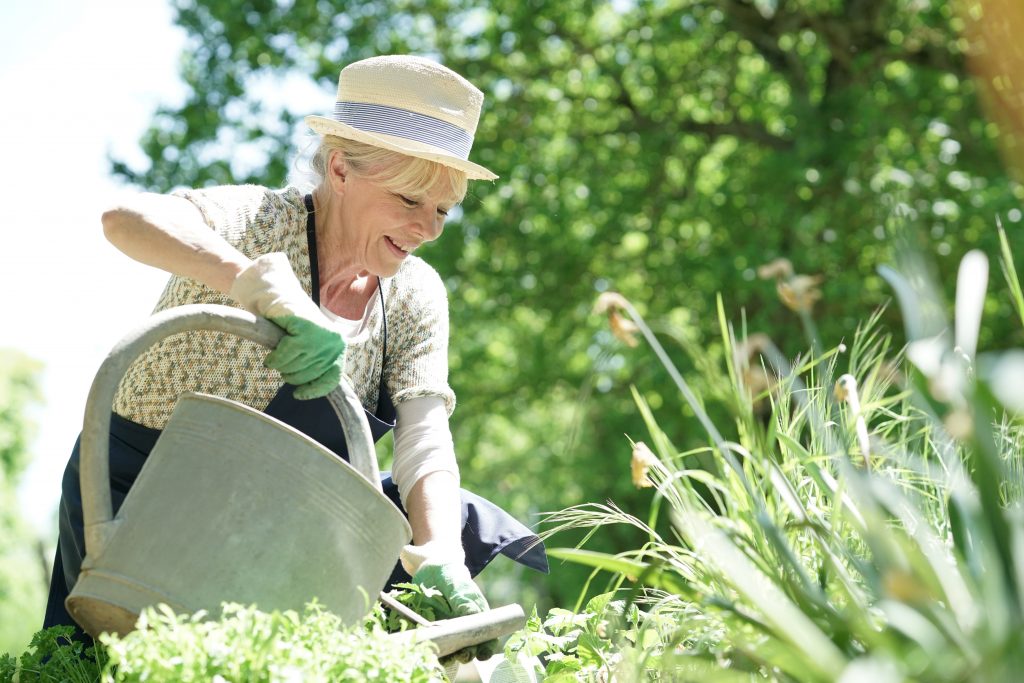
“Having places frogs can shelter from is important – areas where you’ve got shrubs and bushes and trees and some longer grass, and then things like leaf litter and fallen timber on the ground. Some of them will use your downpipes.
“Places they can shelter from that are cool, maybe a bit damp or moist, and dark. At night they’ll come up for air and go look for food.
“Most gardens would have a source of insects that frogs can eat. With things like the compost bin, there’s always going to be plenty of insects around there.
“You could put out some solar lights at night which will attract insects.
“Most importantly, put some sort of water body in – whether that be a bathtub, pond or dam.
“You’ll attract and then retain a frog population there because they will have somewhere they can breed.”
Queensland Frog Society and Sunshine Coast Council have further details on how to create a frog-friendly garden.
Like stories that inform, connect and celebrate the Sunshine Coast? So do we. Join an independent local news revolution by subscribing to our FREE daily news feed at the bottom of this article.


